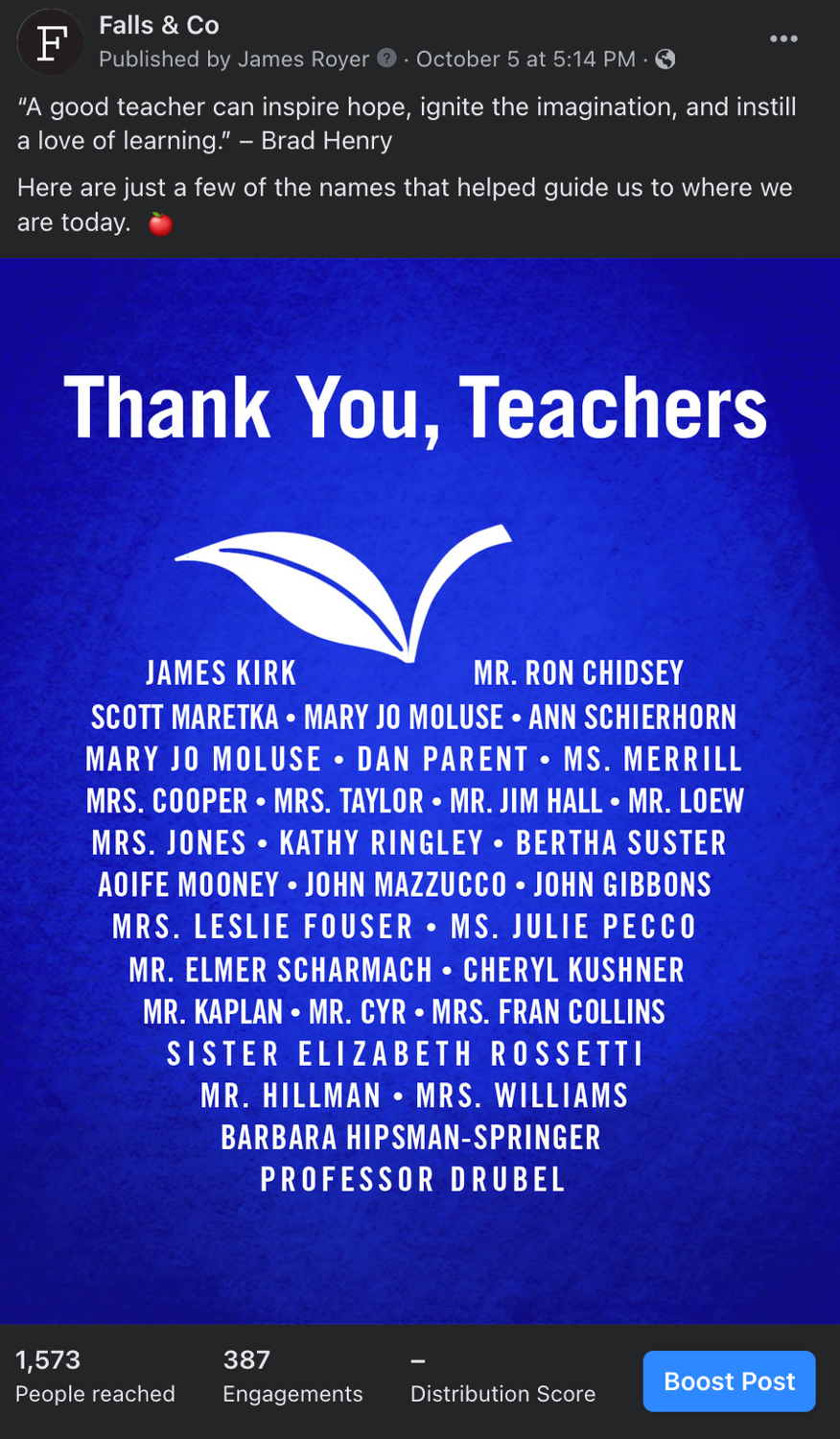
Falls | March 3, 2022
“You’re on mute!”
It’s one of the most used phrases in the last 24 months. With the COVID-19 pandemic leading to more remote meetings, it is easy to forget to click the little microphone button on the video conference screen as you dive into your well-timed response to a colleague or client.
Being on mute is also a concern for social media marketers. With the organic-reach spigot turned down like a fourth-quarter stadium draft keg, our well-intentioned social media posts fail to reach followers.
With a reported 72.3% of Americans possessing at least one social media account in 2021, it should be easier to reach our intended audiences. Right?
Marketers invest in influencer strategies and paid social media advertising to counter this challenge and attempt to optimize their social media return on investment (ROI). One area they neglect to look at is engaging their employees.
After all, a company’s employees each have a network that is 10 times larger than its current social media follower counts, reports LinkedIn.
Simply stated, an employee engagement plan is an essential element of a brand social media strategy. In many ways, employees are like influencers with two key exceptions:
1. Employees hold more authenticity, and
2. Have a more significant stake in the success of their company’s social media accounts
If that’s not enough, here are five more reasons you need to include employee engagement as part of your comprehensive social media strategy.
1. Grow your social media audience
No matter the number of people in your organization, a surefire way to grow your audience is to get your employees to click the "follow" button. This simple tactic is often overlooked as senior leaders assume every employee follows the company.
Being strategic with internal communications through email newsletters, intranets and even physical signage can prompt employees to follow the accounts.
Another tactic is asking employees to participate in content development. Quick questionnaires and surveys can help content creation, ensuring those people engage and share that post.
The following is an example we ran at Falls and Co. We sent out a questionnaire to employees on National Teacher's Day, asking everyone to tell us about the teacher who made the most significant impact on them.

The results were terrific. This Facebook post reached over nine times more people than those who follow our account, most of which was achieved through employees sharing the post. As previously mentioned, if employees have 10 times more followers, those shares to their network result in more post views and an audience that extends into employee networks.
2. Drives greater reach
The average organic reach on Facebook is between 2.2% to 5.5% of the people who follow an account. In other words, if an account has 1,000 followers, between 22 to 55 people on average will see a brand post. This is how the algorithms work, due to the cacophony of social media posts from other brands, friends and family. All compete for the valuable commodity of attention.
Unique reach is one metric we use to understand post performance. Reach tells us if a post has diverted the algorithm restraints or gained engagements that unlock more reach.
The good news is several industry studies show that employees engaging in brand posts increase the reach:
- Brand messages reached 561% farther when shared by employees versus the same messages shared via official brand social channels, according to MSLGroup
- Content shared by employees also gets eight times more engagement, on average, than content shared by brand channels — and is re-shared 25 times more frequently
- Employee-shared content gets eight times more engagement than content shared by brands, according to Social Media Today
- Content has two times higher engagement when shared by employees, according to LinkedIn
3. Build influence and trust
When we talk to clients about Influencer programs, authenticity rises as one of the most common concerns. It’s a valid concern. After all, you are paying someone to talk about the company's product or service.
We mentioned above that employees offer greater authenticity. Employee posts also increased trustworthiness. A recent study found 76% of individuals surveyed say they’re more likely to trust content shared by “normal” people than content shared by brands.
Additionally, more people trust a regular employee (54%) than a CEO (47%).
These studies underscore the way employees exhibit influence in their personal networks.
4. Foster advocacy
When employees engage and serve as brand ambassadors, it harnesses advocacy. They embody the voice, build relationships and engage the customer throughout every step of the customer journey, and often step in to offer help when customer service issues arise.
A second impact is made when employees adopt social media advocacy. It helps with recruiting and retention.
Employee activity in social media positively impacts "human capital,” one Jobvite survey finds. Other findings include:
- Employee referrals have the highest applicant-to-hire conversion rate – only 7% of applicants are via employees, but this accounts for 40% of all new hires.
- 67% of employers and recruiters said the recruiting process was shorter, and 51% said it was less expensive to recruit via referrals.
- 47% of referral hires have greater job satisfaction and stay longer at companies.
Employee activity on social media lets potential applicants learn more about available roles. When encouraged to share, employee posts also show potential recruits what it is like to work there and tangibly demonstrate culture.
We like this example from the U.S. Air Force encouraging staff and crew to share content:
“You are encouraged to use social media to share your experiences as an Airman or Airwoman…Whether you’re sharing information with just your close friends and family or sharing it with the world in an online video or a blog, you’re informing people on what it’s like to be a part of the world’s greatest Air Force.”
We recently helped one of our clients, Energy Harbor, harness employees’ social networks by casting employees in a video series testing potentially helpful power outage life hacks. It is a simple method to show the people behind the brand.
5. Impact sales
Beyond friends, family and potential employees, another audience may be influenced through social media. Employees can provide avenues to prospective clients or investors.
The Gartner Future of Sales 2025 report predicts that by 2025, 80% of B2B sales interactions between suppliers and buyers will occur in digital channels.
Your employees are natural connectors to prospective buyers.
Social media is also a window into the organization for potential investors – and 82% consult a company’s social media channels when evaluating a current of prospective investment, according to an Edelman report.
Seeing engaged employees advocating on behalf of their company shows strength. It is easy to see why this would be valuable to investors.
Are your company’s social media accounts on mute? If so, encourage employees to turn up the volume with their voices.
